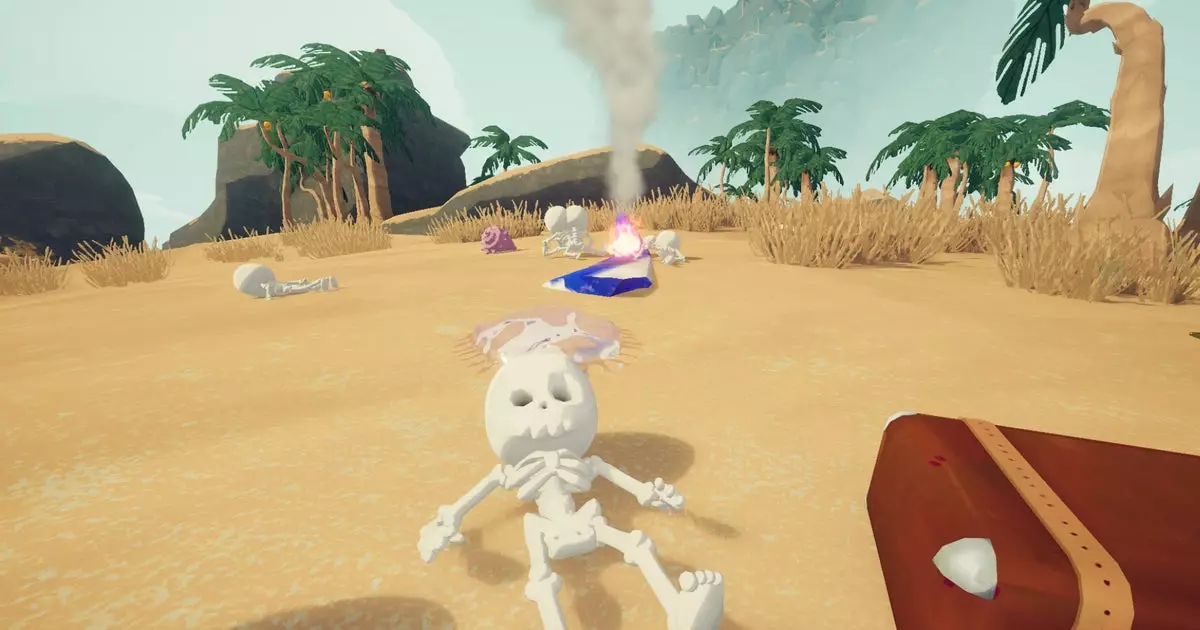Video games often serve as escapist realms where players test their patience, skills, and resilience. Titles like Peak exemplify this, offering treacherous terrains and towering challenges that evoke both admiration and apprehension. However, some developers and modders push beyond the conventional, blending their creativity with darker themes to offer players unique, and sometimes unsettling, experiences. This is vividly exemplified by the Everest mod, a provocative addition to the cooperative climbing game Peak, which fundamentally alters the way players perceive danger and companionship within the game world.
The Morbid Beauty of Shared Mortality
The Everest mod introduces a macabre twist to Peak by populating the landscape with skeletons—remnants of players who’ve met their demise in the game. As Steven, a member of the Beat Saber community and a passionate modder, explains, the mod records the locations of player deaths and transforms those spots into a haunting graveyard of bones. With over 10,000 skeletons scattered across the map from just three thousand players’ falls, the game environment morphs into a chilling mosaic of shared mortality. This demographic detail sharpens the thematic edge: it emphasizes the perilous nature of the challenge, forging a collective acknowledgment of risk among players, even in a virtual setting.
The visual impact is striking—bones sprawled across treacherous ledges, shadows of past failures, and an eerie reminder of the real dangers lurking in the game. Rather than merely being an aesthetic choice, this collection of skeletons creates an atmosphere that questions the boundary between challenge and existential dread. It turns a cooperative game into a morbidly fun exploration of mortality, where your fellow climbers’ fates linger in every step you take.
Transforming Death into Connection
What sets this mod apart from typical game modifications is its philosophical aim: to foster a sense of shared experience and interconnectedness. As Steven describes, the skeletons serve as markers—possibly warnings—highlighting hazardous spots, and symbolically connecting players through a collective narrative of failure and perseverance. It’s a digital memorial that pushes players to consider their own vulnerability in the face of nature’s deadly grandeur.
Furthermore, the mod features adjustable settings that allow players to tune how many skeletons appear and where they are placed, thereby personalizing their experience. Notifications inform players when the mod is functioning properly, blending technical sophistication with thematic immersion. This flexibility transforms what could be a grotesque display into an optional, thought-provoking layer of gameplay, encouraging reflection on mortality within the gameplay itself.
A Reflection of Real-Life Risks in a Digital Realm
While the idea of turning a game into a skeleton-filled graveyard might seem provocative or even morbid, it unearths a vital truth: risk and death are inherent in any challenging pursuit, digital or real. The Everest mod, in its dark humor and imaginative scope, invites players to confront the realities of danger—albeit in a stylized, exaggerated form. It’s a reminder that every feat of daring, whether scaling mountains or tackling virtual peaks, carries an inherent chance of failure—and sometimes, of being forever marked by that failure.
The collaboration involved also underscores how modding communities can reshape the narrative of a game, transforming it from a simple challenge to an immersive experience replete with symbolism and emotional depth. It pushes players to deliberate on mortality, communal failure, and shared stories—elements often absent in more sanitized gaming environments.
Beyond Morbid Curiosity: Redefining Gaming’s Potential
The Everest mod exemplifies how gaming technology and community-driven creativity can explore complex themes outside traditional boundaries. It challenges players not just to climb but to reflect on the costs and connections that come with pursuit of greatness in virtual worlds. In a broader sense, it hints at a future where games serve as platforms for deeper philosophical engagement, blending entertainment with existential inquiry.
By deliberately haunting the landscape with the memories of others, this mod transforms Peak into a space of collective remembrance—a testament to resilience, failure, and the shared journeys of digital explorers. While some may view it as inappropriate or unsettling, its true power lies in its ability to provoke thought and foster a sense of community amid the inevitable presence of death. This bold experiment disrupts the sanitized norms of gaming, offering a raw glimpse into the cost of human endeavor—mirrored vividly in the bones of those who dared before us.

